Foundation Repair Concrete Repairman® We Fix It Right™
Licensed, Bonded and Insured Commercial & Residential Foundation Repair Contractors - ROC# 300512 CR-9
Foundation Repair Concrete Repairman® We Fix It Right™
Licensed, Bonded and Insured Commercial & Residential Foundation Repair Contractors - ROC# 300512 CR-9
On this job at a home in Glendale Arizona, we are stitching and leveling the interior floor damage that resulted from foundation heaving.
Foundation Damage Inspection Request
For more information contact
James Belville (602)418-2970
Concrete Repair
Foundation settlement causes heaved foundation problems in Arizona. Here’s why.
This middle room we’re putting stitches in and filling up the floor cracks and we’re going to put floor leveler on here because the fact that it’s just follow that foundation down because the water on the outside it’s just heaving these floors and cracking them so we will use floor leveler. The floor leveling compound will allow for tile, wood flooring, and or laminate flooring to be installed. This eliminates the high cost of lifting the foundation. Saving possibly $10,000 of thousands of dollars.
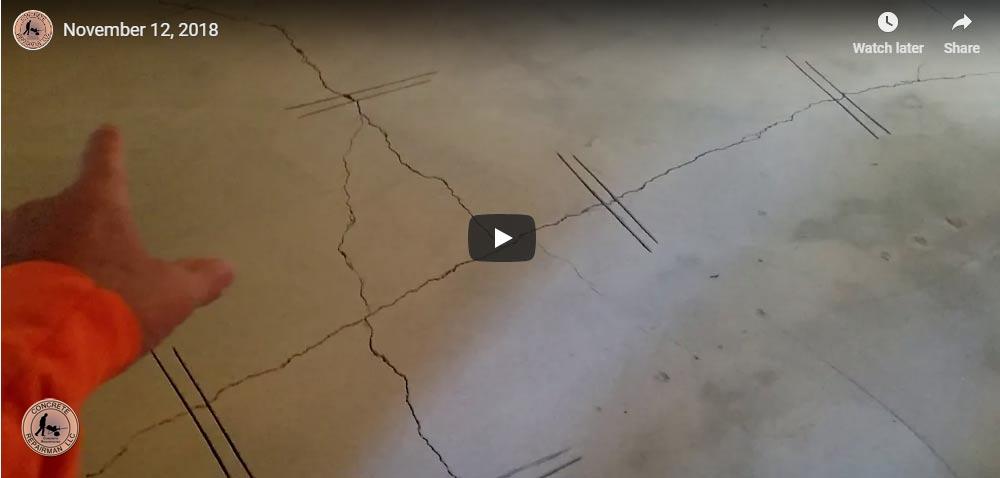
In here this one was just ground down can’t see it too well then we get in here we got her stitches cut you’re going to throw this grinder on here re-profile these cracks to a better profile for tile.
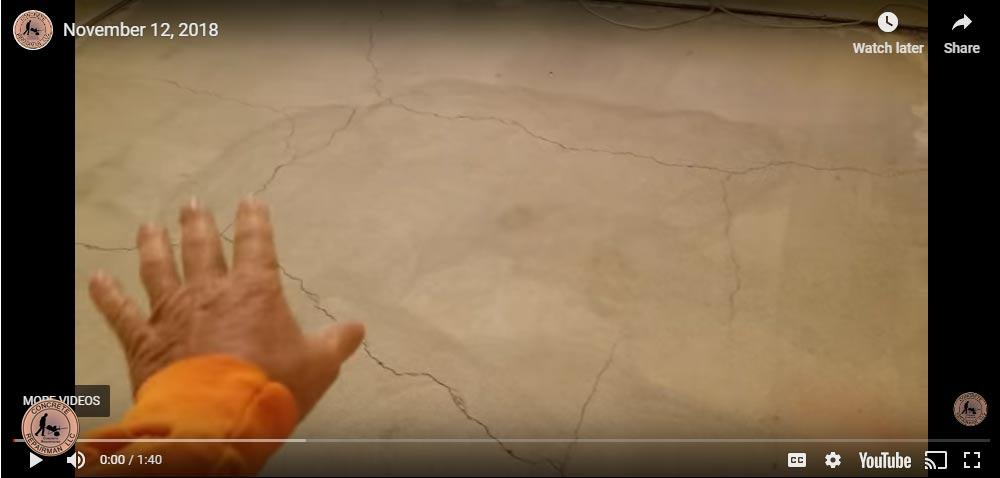
Reason why we got stitches here is because the tile is a rigid material and if these floors move now that they’re broke they’re all independent from each other.
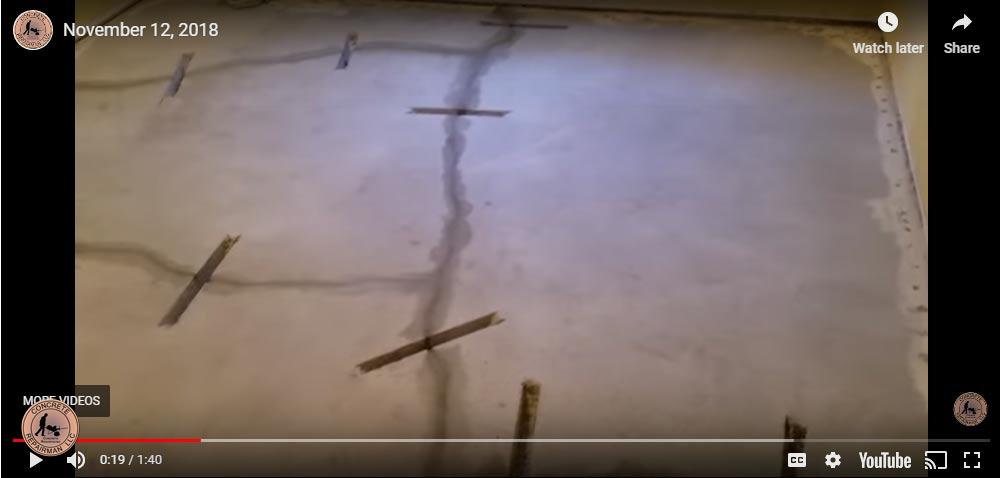
Stitching them together is very realistic on any repair this area is well in the kitchen the water on the outside is caused that foundation go down over there breaking this entire floor all up so the floor level are over here on this side is gonna bring that level up stitching here you can see how far we’re grinding you can see the aggregate in the rocks here.
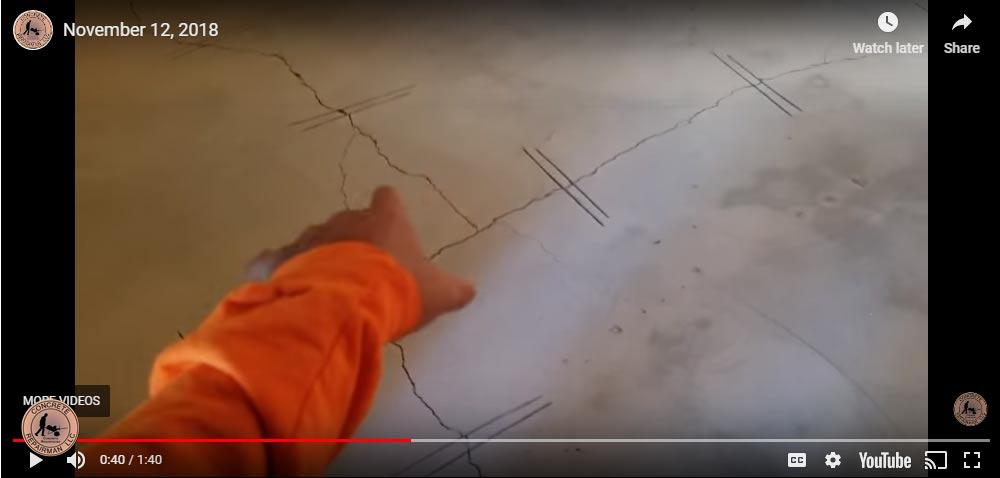
We filled all of the cracks gutter stitches in ready to go all we need now is to patch the sides where a floor leveler is going to go up against the wall in level this floor up for more information about floor leveling floor grinding contact James at 602-418-2970 for more information.
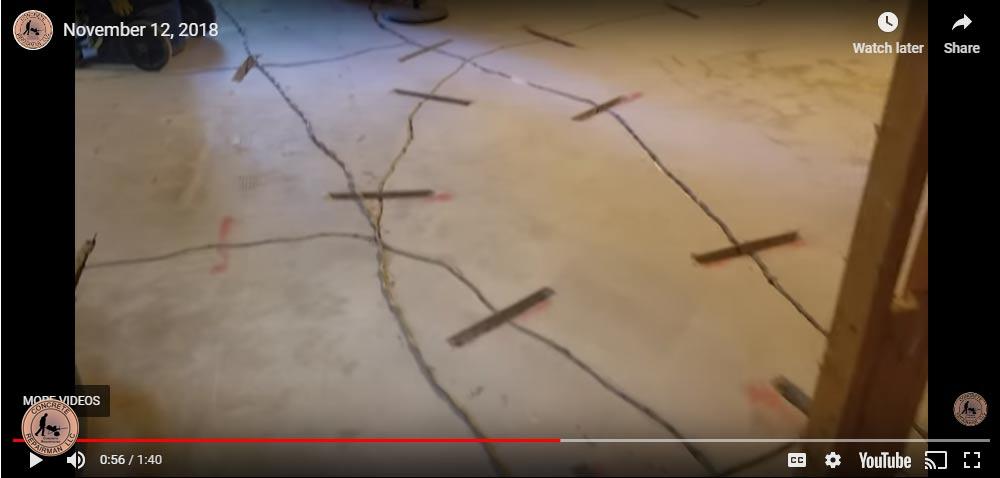
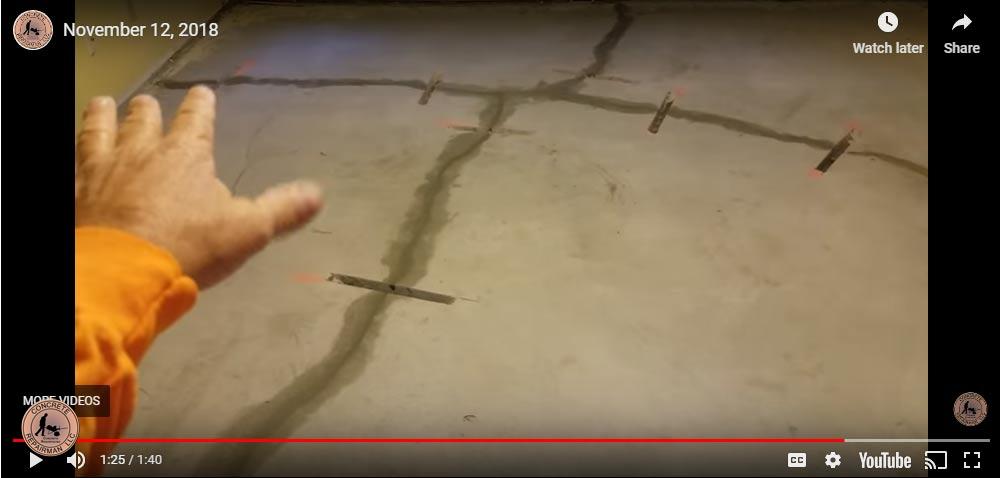
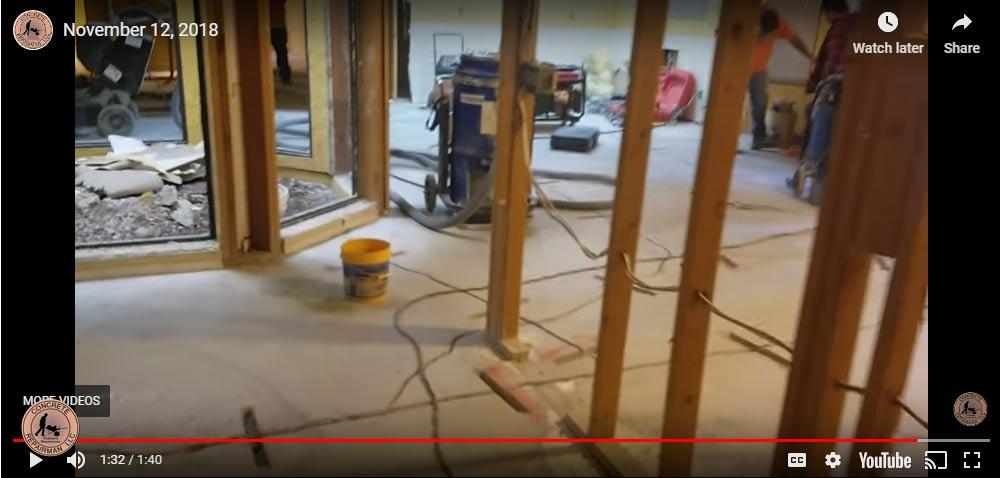
Heaving foundations damaging slabs can cause several problems in your home. Foundation heave occurs when a foundation or concrete slab is forced upward by the expansion of soils underneath. This process creates a number of issues in a home, and it can lead to very severe damage.
Heave is the upward movement of a foundation or slab caused by underlying soils that expand or swell. This occurs due to an increase in moisture or by freezing forces. Heave is more common with slabs than foundations because slabs have less weight to resist heaving forces. More about foundation heave.
Slab heave is caused by clay soils expanding when they absorb moisture. The source of moisture can be rainwater, broken sewer pipes, ground water, poor surface drainage and garden irrigation. The amount of water in the ground is often uneven and so the movement in the house is uneven. This type of misdiagnosis is very prevalent in Arizona. Get the real story call James Belville 602-418-2970.
Ground heave is the upward movement of the ground usually associated with the expansion of clay soils which swell when wet. The impact of heave is opposite to the effect of subsidence which is where soil is unstable and sinks downward, or settlement which is caused by the weight of a building. More about: signs of foundation problems.
Ground Heave is the expansion of soil, typically caused by an increase in moisture content. Ground heave solutions are designed to protect floor slabs, ground beams and pile caps from the effects associated with expansive soil types.
Subsidence generally occurs when the ground under a house contracts due to a lack of water, which dries out the soil and the house drops. Heave, on the other hand, takes place when an excess of water causes the earth in the ground to expand and ‘heave’ the property upwards and outwards.
The most common cause of ground heave is associated with trees which have died or been removed. … Broken drains or nearby building works that interfere with existing ground drainage. Swelling of the sub-soils due to seasonal weather changes. Water expanding as it freezes causing soil to swell.
Clay heave is the term given to what can happen when there’s been an increase of moisture in the earth. … Clay heave expansion can’t travel sideways or downwards. It can only go up. If a structure is blocking the upward movement, clay heave will lift the building, cracking the foundations as pressure is released. More about: Expansive Clay Soil.
Foundation upheaval is a serious problem, as it could eventually cause your home to be unsafe to inhabit. Settling refers to your home “sinking into” its surroundings by actually lowering into the soil. All homes settle; however, too much settling can lead to foundation problems.
Ground heave is the upward movement of the ground usually associated with the expansion of clay soils which swell when wet. … The impact of heave is opposite to the effect of subsidence which is where soil is unstable and sinks downward, or settlement which is caused by the weight of a building.
Ground heave occurs when the ground beneath a building moves upwards, i.e. the opposite of subsidence. Heave is caused by the expansion of the ground, and is usually associated with clay soils which swell when they get wet. … Heave can cause significant damage to building foundations and structure.
Expansive soils owe their characteristics to the presence of swelling clay minerals. As they get wet, the clay minerals absorb water molecules and expand; conversely, as they dry they shrink, leaving large voids in the soil.
Typically heaving occurs when moisture is added to or returns to the soil, causing it to expand, which in turn pushes up the floor slabs and interior footings. Heave usually occurs with newer homes. When a house is built, a hole is dug and the hole remains exposed to sunlight, usually for several weeks. More about: Floor Heave.
Ground heave is the upward movement of the ground usually associated with the expansion of clay soils which swell when wet. As the soil generally cannot expand downwards or sideways, the result is that the exposed upper surface of the soil rises up.
Slip is defined as the relative movement of geological features present on either side of a fault plane. In measuring the horizontal or vertical separation, the throw of the fault is the vertical component of the separation and the heave of the fault is the horizontal component, as in “Throw up and heave out”.
The probable cause was declining groundwater levels. Here are some other things that can cause land subsidence: The principal causes are aquifer-system compaction, drainage of organic soils, underground mining, hydro-compaction, natural compaction, sinkholes, and thawing permafrost.
Sinking Concrete and Why Concrete Sinks. Sinking concrete – you’ll come across it in the form of uneven, cracked, or sunken concrete slabs. And it doesn’t happen without cause. … Well, slab settlement refers to the movement a concrete slab experiences when the soil below can no longer support the weight of it.
A concrete slab is a common structural element of modern buildings. Horizontal slabs of steel reinforced concrete, typically between 4 and 20 inches (100 and 500 millimeters) thick, are most often used to construct floors and ceilings, while thinner slabs are also used for exterior paving.
Heaving foundations and slabs can cause several problems in your home. … Foundation heave occurs when a foundation or concrete slab is forced upward by the expansion of soils underneath. This process creates a number of issues in a home, and it can lead to very severe damage.
Here are some warning signs to look out for: New cracks in your walls that are more than 3mm wide, normally wider at the top (but don’t panic, not all cracks mean subsidence – minor cracks are fairly common). Cracks forming around weak spots in your home (for example, around doors and windows).
Most household insurance policies – and some commercial property insurance policies – cover loss or damage caused by subsidence, heave and landslip. However, they only cover the cost of repairing the loss or damage. They do not cover the cost of preventing further subsidence.
The most common cause of ground heave is associated with trees which have died or been removed. Broken drains or nearby building works that interfere with existing ground drainage. Swelling of the sub-soils due to seasonal weather changes. Water expanding as it freezes causing soil to swell.
Expansive clay heave is the term given to what can happen when there’s been an increase of moisture in the earth. Clay heave expansion can’t travel sideways or downwards. It can only go up. If a structure is blocking the upward movement, clay heave will lift the building, cracking the foundations.
Subsidence generally occurs when the ground under a house contracts due to a lack of water, which dries out the soil and the house drops. Heave, on the other hand, takes place when an excess of water causes the earth in the ground to expand and ‘heave’ the property upwards and outwards.
Clay body absorption is the amount of water that can leach through a fired clay body, regardless of the glaze or coating, while shrinkage is the rate at which the body shrinks during drying and firing.
Your school, the building where you work, the stores you shop in—all of them are built on soil, and often with it. Building foundations need to be on stable and strong soils. … Soil with good structure is more stable. Clay textures are often more stable than sand textures because they have better structure.
For the most part, most insurance companies do not cover foundation settlement, unless there are broken water lines under the interior floor that have caused the settlement and damage, “under roof damage”. If you have flood insurance, this would be the most likely to cover this type of settlement of sinking of your foundation. I can’t speak for any insurance company, your would need to consult your insurer for covered damages. Types of foundation problems with Post Tension, Stem Wall, and Monolithic foundations in Arizona.
Structural damage can consist of singular or multiple problems. Can range from roof being pulled apart from foundation settlement, roof trusses braking, to walls slipping off their foundations. Early signs of structural damage are, cracks in drywall, floors heaving, roof leaks, stair stepping in block walls, vertical cracks in foundation walls, vertical cracks in basement walls.
Foundation heave is when the perimeter foundation walls begin to sink. The interior floor then fallows the foundation down causing the interior floor to heave upwards. This can vary, interior floors can not only fallow the foundation wall down, it can also slip, and all other variable between.
Settlement. Moisture being held next to foundation walls, will penetrate deep enough to effect the dirt that holds up the foundation, walls, and roof structure. Here in Arizona, our foundations are shallow, and are more sensitive to settlement then other areas in the US. When the soil moisture content reaches a high enough level, the soil can no longer hold up the vertical pressures being applied by gravity. When this happens, the foundation moves down, taking the walls with it. The interior floating floor slab, or monolithic foundations, will fallow the foundation walls down, causing the interior floors to crack and heave upwards. It is not because of expansive soils are wet causing this floor heaves in Arizona. It is the rain water holding near the foundation walls.
Heaves, in general, accuse when the soil underneath no longer is stable. Water, or moisture saturation of most soil types, except for bedrock, will sing. The act of settlement in one area will heave upwards another area, or cause other cracks to develop.
Structural slabs are concrete slabs that are built to hold the loads of a structure.
The cost to lift, or raise a concrete slab may very from one contractor to another.
Heave in a house is when the interior floor has risen, broken tile, cracks in drywall and may lead to roof leaks.
Heave indicates that the perimeter foundation footing that holds up the structure is sinking.
You know your foundation is sinking when: Cracks appear in the ceiling dry wall, cracking near doorways and windows, floor has raised and cracking tile, and cracks in the foundation walls.
Heaving foundation repair: Depending on the severity of the damage, heaving foundation repair usually consist of grinding the heave and stitching the two now separated slabs, using reinforcement steel and structural grout, grout the steel in place. This method is widely used throughout the US. If the interior floor slab needs to be leveled, then a floor leveler is then used to bring the floor back the correct elevation. Push piers are also use to lift a sinking foundation perimeter footing, to correct the elevation.
Foundation repair in Phoenix Arizona by licensed, bonded and insured contractors, is always your best choice. Call 602-418-2970
Foundation specialists have the skills, knowledge, and experience to make the correct diagnoses of foundation problems.
Foundation problems in Phoenix Arizona are: Oxidized Rebar, Spalling, Settlement, Floor Heave, Foundation Heave, Foundation Cracks, vertical and horizontal. Most all of the foundation problems could be avoided, if only the architects, builders and the engineers would recognize that moisture, (water) is the No.#1 problem here in Arizona. It is hard to think that “There is a water problem here in Arizona” right? Simply put: (1) Compact dirt grade to 86% compaction before installing the foundation footing. (2) Waterproof the exterior foundation walls, before back-filling, and verify that 2 coats of waterproofing (Tar) is installed properly, to just below final dirt grade. (3) Compact the dirt grade when back-filling. (4) Waterproof using a water base acrylic, then exterior house paint on top of that. (5) 6″ rain gutters. If this is done correctly, there will be no longer settlement, heaving floors, broken tile, large cracks in drywall, fewer roof leaks, and less litigation against contractors, and less problems for home owner and commercial building owners in Arizona.
Foundation Repair Expert – Concrete Repairman® LLC – a fully licensed, bonded and insured foundation repair company serving customers in Scottsdale and surrounding areas in Phoenix Arizona. We have over 30 years of experience installing and repairing home foundation cracks, floor crack structural stitching, floor leveling, stem walls, post tension, monolithic and resurfacing foundation damage for homeowner, and commercial clients in Phoenix Arizona.
YOUTUBE VIDEOS | POST | SERVICES | REVIEWS | SUMMARY | GALLERY | INFO
Glendale Arizona Stem Wall Foundation Repair By Concrete Repairman®
Tempe Arizona Stem Wall Foundation Repair By Concrete Repairman®
Chandler Arizona Stem Wall Foundation Repair By Concrete Repairman®
Gilbert Arizona Stem Wall Foundation Repair By Concrete Repairman®
Phoenix Arizona Stem Wall Foundation Repair By Concrete Repairman®
Mesa Arizona Stem Wall Foundation Repair By Concrete Repairman®
Scottsdale Arizona Stem Wall Foundation Repair By Concrete Repairman®